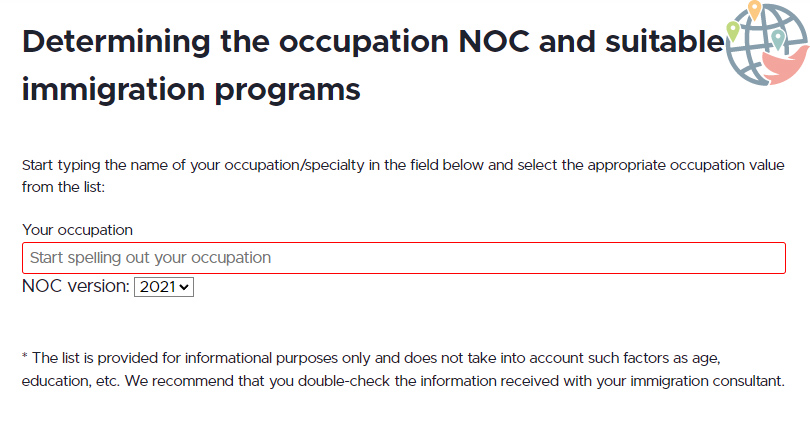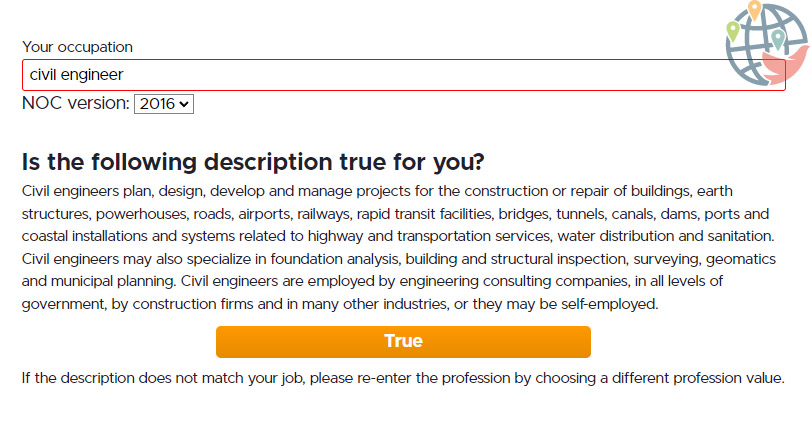NOC 2021 in Canada - explaining in simple words

All immigration programs say that you must have a certain NOC occupation. What does that mean?
The Canadian national system of organization and description of occupations is a rather complicated concept for many candidates.
Canada has a unique National Occupational Classification (NOC) that describes the duties, working conditions, and other details of occupations. NOC assigns a 5-digit code to each occupation.
NOC codes are used in immigration program requirements, and job postings from Canadian employers. The classification is also used by students, employees, career counselors, and educational institutions.
Canada updates the NOC every 5 years. The NOC 2021 version has been in use since 2022.
How the NOC is organized
The NOC system has a clear structure. The code numbers indicate the characteristics of occupation in the following sequence:
- broad occupational category;
- Training, Education, Experience and Responsibilities (TEER);
- major group of occupations to which the specialty belongs;
- sub-major group of occupations to which the specialty belongs;
- minor group of occupations;
- unit group (an occupation itself).
Let's look at these groups in more detail.
Broad occupational category
The first digit of the 5-digit NOC code indicates the broad occupational category to which the specialty belongs. There are 10 of them:
- 0 — legislators and senior management occupations;
- 1 — business, finance and administration occupations;
- 2 — natural and applied sciences and related occupations;
- 3 — health occupations;
- 4 — occupations in education, law and social, community and government services;
- 5 — occupations in art, culture, recreation and sport;
- 6 — sales and service occupations;
- 7 — trades, transport and equipment operators and related occupations;
- 8 — natural resources, agriculture and related production occupations;
- 9 — occupations in manufacturing and utilities.
Thus, the first number is the broad field to which the occupation belongs.
Training, Education, Experience and Responsibilities (TEER)
The second digit of the NOC code indicates the TEER category, which stands for Training, Education, Experience and Responsibilities. The TEER category indicates what kind of education or skills are needed to work in a particular occupation. There are 6 TEER categories:
- TEER 0 — management occupations, e.g. advertising manager, financial manager;
- TEER 1 — occupations usually require a university degree, e.g. financial consultant, software engineer;
- TEER 2 — occupations usually require a college diploma or apprenticeship training of 2 or more years; or supervisory occupations, e.g. computer network technician;
- TEER 3 — occupations usually require a college diploma or apprenticeship training of less than 2 years; or more than 6 months of on-the-job training, e.g. baker, dental assistant;
- TEER 4 — occupations usually require a secondary school diploma; or several weeks of on-the-job training, e.g. retail salesperson, childcare provider;
- TEER 5 — occupations usually require short-term work demonstration and no formal education, e.g. gardener, delivery driver.
Together, the first and second digits of the NOC code form the major group of occupations. They are more narrowly focused than the broad occupational categories. There are a total of 45 of them. Examples of these groups are:
- major group 00 — legislative and senior managers;
- major group 22 — technical occupations related to natural and applied sciences;
- major group 53 — occupations in art, culture and sport.
The major groups are divided into 89 sub-major groups (the first 3 digits of the code). The sub-major groups, in turn, are divided into 162 minor groups (the first 4 digits), and, finally, the minor groups include unit groups, the occupations themselves (5 digits), of which there are over 500.
Example
Let's look at a specific occupation to see how the NOC is structured. For example, let's take the code 41101, these are lawyers and Quebec notaries.
This is what a parsing of the code for this occupation would look like:
| Level | Code numbers | Explanation |
| Broad occupational category | 4 | Occupations in education, law and social, community and government services |
| Major group | 41 | Professional occupations in law, education, social, community and government services |
| Sub-major group | 411 | Professional occupations in law |
| Minor group | 4110 | Judges, lawyers and Quebec notaries |
| Unit group | 41101 | Lawyers and Quebec notaries |
Also, the second digit of the code (1) indicates that the occupation belongs to category TEER 1, that is, it requires a university degree.
How to find out your NOC code
The good news is that you do not have to know the structure of the NOC at all. Most often, immigration programs list either the appropriate occupation codes or the appropriate TEER categories.
For example, if the program says that TEER 0, 1, 2, and 3 occupations can participate, then your occupation must fall into one of those categories. Thus, you only need to know the 5-digit code of your occupation and which TEER category it belongs to.
We have created a unique system that will not only help you find out your NOC code and its TEER but also show you:
- the list of immigration programs that suit your occupation;
- whether you need a license to work in Canada;
- the average wage for your occupation in Canada;
- the minimum, average, and maximum hourly wage by province;
- the demand for your occupation by province;
- the number of people who have already obtained permanent residency in Canada with this occupation.
Once logged in, you will receive up-to-date information about the launch of immigration programs, information sessions, and job fairs for your occupation.
Go to the definition of your NOC code
How to use the tool
In the field highlighted in red, start spelling your occupation. Already after entering the first letters, the system will suggest the names of occupations.

Select the occupation you are looking for from the drop-down list. If it is not on the list, try to find a synonym for your occupation. After selecting an occupation, you will see its description. Check if it corresponds to your activity. If not, enter the name of your occupation again and choose another option from the drop-down list.

When you have found the occupation you want, click the "True" button and you will be redirected to a page with a detailed description of the occupation, its NOC, and all the immigration programs that are suitable for you.
To get full access to the tool, you need to buy the necessary amount of internal currency of the project, coins, and you can get acquainted with all the nuances of immigration with the occupation you chose.
The NOC in immigration programs
Canada uses the NOC system to determine eligibility requirements for immigration programs.
So, for immigration under federal programs that work through the Express Entry system, your specialty and work experience must meet TEER 0, 1, 2, or 3 categories.
The Atlantic Immigration Program has slightly lower requirements. If you want to immigrate through this program, your occupation and experience must meet TEER 0, 1, 2, 3, or 4.
If you have a category TEER 4 or 5 occupation, you may consider one of the provincial immigration programs.
There are also programs that are designed for specific professions.
Our immigration company provides legal assistance with visas and permanent residency in Canada. At the consultation with our specialist, you will find out your NOC code and ways of immigration that are suitable for you. We can then help you with your application.





























